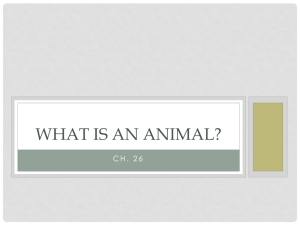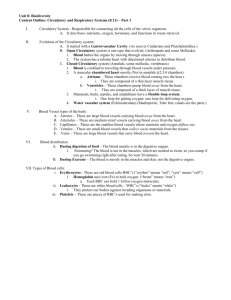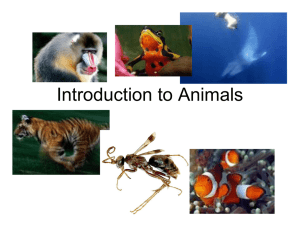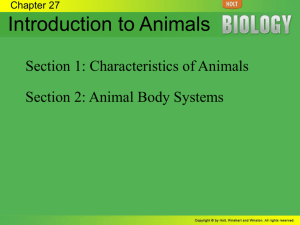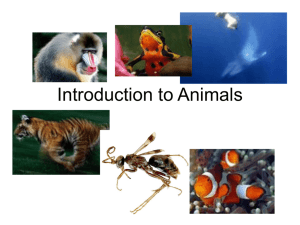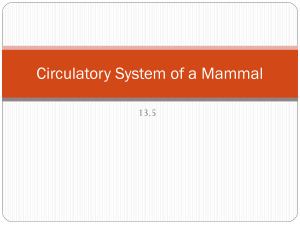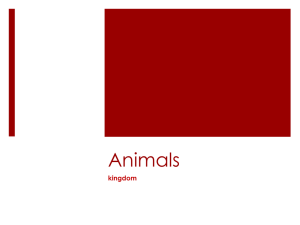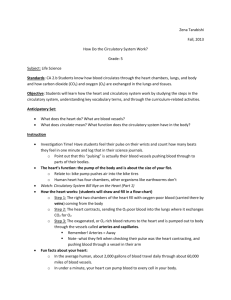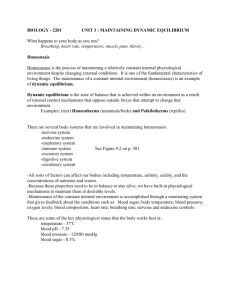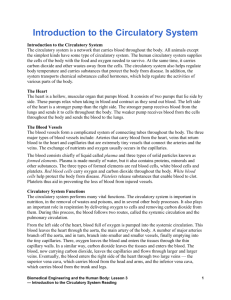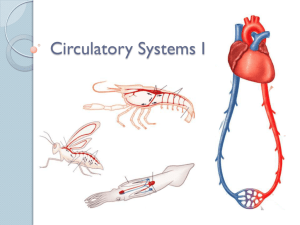Ch27 Study Guide - Stephanie Dietterle Webpage
advertisement
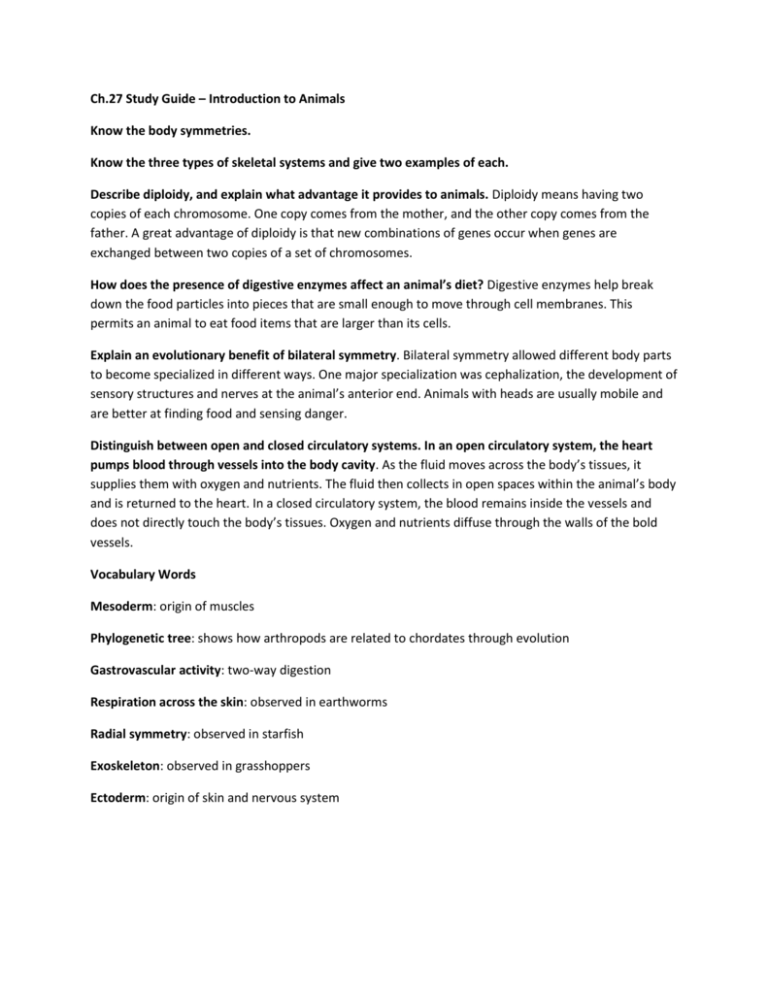
Ch.27 Study Guide – Introduction to Animals Know the body symmetries. Know the three types of skeletal systems and give two examples of each. Describe diploidy, and explain what advantage it provides to animals. Diploidy means having two copies of each chromosome. One copy comes from the mother, and the other copy comes from the father. A great advantage of diploidy is that new combinations of genes occur when genes are exchanged between two copies of a set of chromosomes. How does the presence of digestive enzymes affect an animal’s diet? Digestive enzymes help break down the food particles into pieces that are small enough to move through cell membranes. This permits an animal to eat food items that are larger than its cells. Explain an evolutionary benefit of bilateral symmetry. Bilateral symmetry allowed different body parts to become specialized in different ways. One major specialization was cephalization, the development of sensory structures and nerves at the animal’s anterior end. Animals with heads are usually mobile and are better at finding food and sensing danger. Distinguish between open and closed circulatory systems. In an open circulatory system, the heart pumps blood through vessels into the body cavity. As the fluid moves across the body’s tissues, it supplies them with oxygen and nutrients. The fluid then collects in open spaces within the animal’s body and is returned to the heart. In a closed circulatory system, the blood remains inside the vessels and does not directly touch the body’s tissues. Oxygen and nutrients diffuse through the walls of the bold vessels. Vocabulary Words Mesoderm: origin of muscles Phylogenetic tree: shows how arthropods are related to chordates through evolution Gastrovascular activity: two-way digestion Respiration across the skin: observed in earthworms Radial symmetry: observed in starfish Exoskeleton: observed in grasshoppers Ectoderm: origin of skin and nervous system Concepts to Know The skeletal system supports an animal’s body, is essential for movement, and helps protect the animal’s soft tissues. An animal has mobility not found in other multicellular organisms because animal cells do not have rigid cell walls. A (n) circulatory system is a network of vessels that carry fluids to all parts of the body. Somites and the vertebral column are examples of segmentation in vertebrates. A terrestrial animal’s excretory system helps the animal maintain its water balance. Aquatic animals such as some fish and simple invertebrates excrete ammonia. Animals that rely on internal fertilization are often terrestrial. A hydra has a gastrovascular cavity, a nerve net, and a hydrostatic skeleton. Evolutionary milestones of animals include the development of cephalization. Almost all animals share the characteristics of heterotrophy, diploidy, and mobility. In a closed circulatory system, the route of the blood is: heart, blood vessels, heart. A difference between coelomates and pseudocoelomates is that the gut of a pseudocoelomates is surrounded by the body cavity, and the gut of a coelomates is surrounded by the mesoderm.

